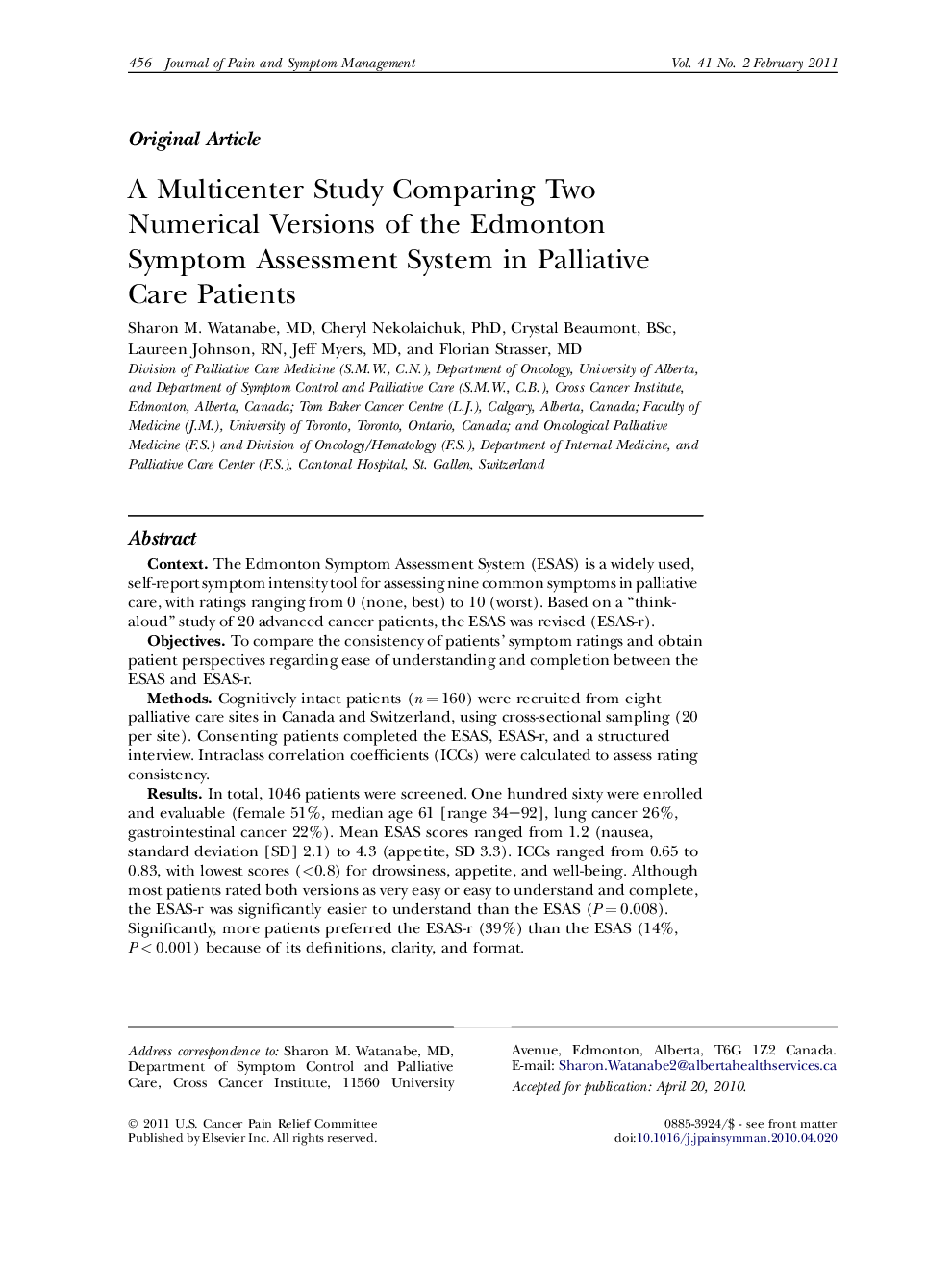| کد مقاله | کد نشریه | سال انتشار | مقاله انگلیسی | نسخه تمام متن |
|---|---|---|---|---|
| 2736179 | 1147827 | 2011 | 13 صفحه PDF | دانلود رایگان |

ContextThe Edmonton Symptom Assessment System (ESAS) is a widely used, self-report symptom intensity tool for assessing nine common symptoms in palliative care, with ratings ranging from 0 (none, best) to 10 (worst). Based on a “think-aloud” study of 20 advanced cancer patients, the ESAS was revised (ESAS-r).ObjectivesTo compare the consistency of patients’ symptom ratings and obtain patient perspectives regarding ease of understanding and completion between the ESAS and ESAS-r.MethodsCognitively intact patients (n = 160) were recruited from eight palliative care sites in Canada and Switzerland, using cross-sectional sampling (20 per site). Consenting patients completed the ESAS, ESAS-r, and a structured interview. Intraclass correlation coefficients (ICCs) were calculated to assess rating consistency.ResultsIn total, 1046 patients were screened. One hundred sixty were enrolled and evaluable (female 51%, median age 61 [range 34–92], lung cancer 26%, gastrointestinal cancer 22%). Mean ESAS scores ranged from 1.2 (nausea, standard deviation [SD] 2.1) to 4.3 (appetite, SD 3.3). ICCs ranged from 0.65 to 0.83, with lowest scores (<0.8) for drowsiness, appetite, and well-being. Although most patients rated both versions as very easy or easy to understand and complete, the ESAS-r was significantly easier to understand than the ESAS (P = 0.008). Significantly, more patients preferred the ESAS-r (39%) than the ESAS (14%, P < 0.001) because of its definitions, clarity, and format.ConclusionThe ESAS-r retains core elements of the ESAS, with improved interpretation and clarity of symptom intensity assessment. It represents the next generation of ESAS development, with further validation recommended for drowsiness, appetite, and well-being.
Journal: Journal of Pain and Symptom Management - Volume 41, Issue 2, February 2011, Pages 456–468